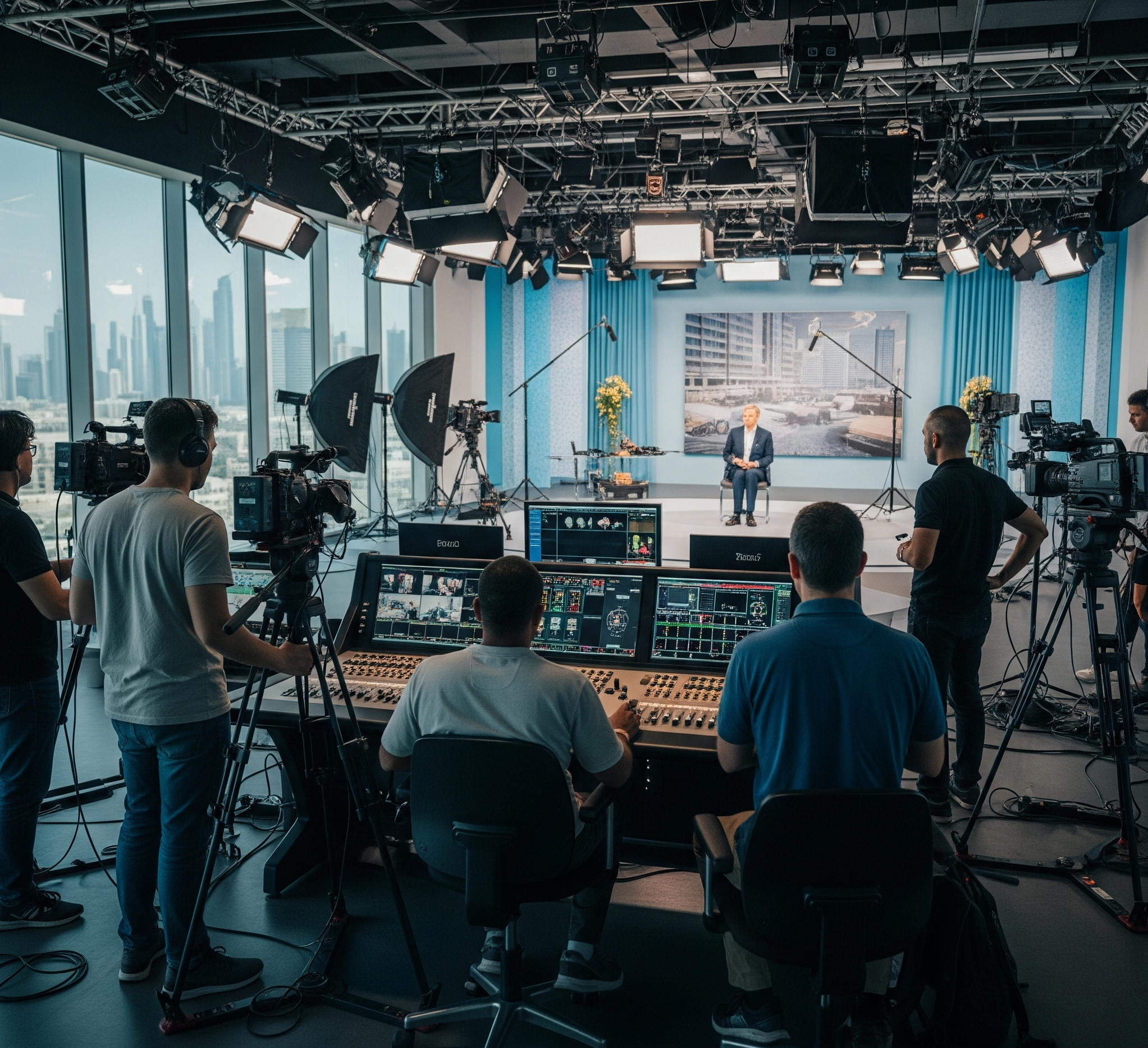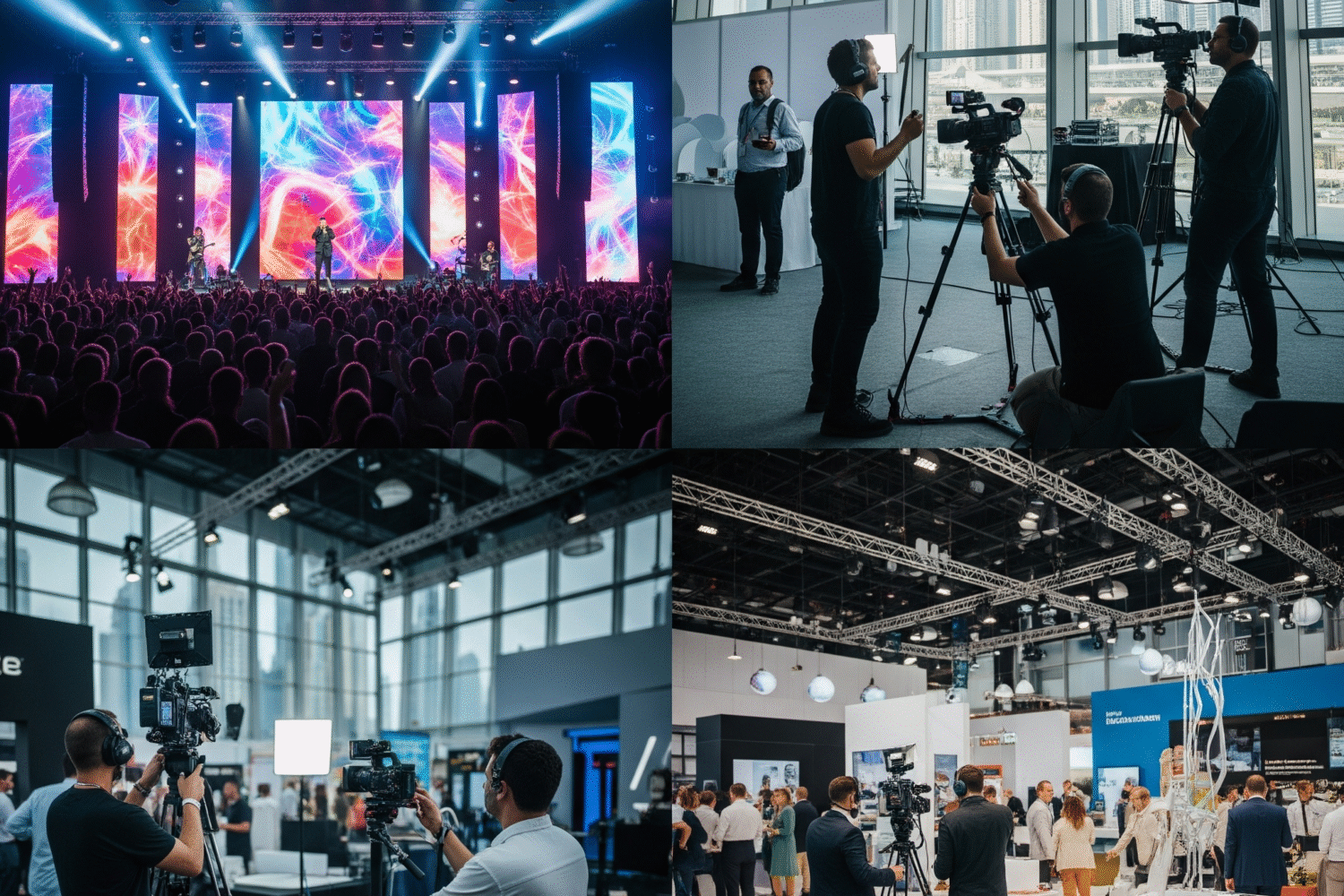Discover how video can be the single most powerful tool for showcasing your company’s true identity. Learn to move beyond a simple job description and craft a compelling, authentic story that not only attracts top talent but also fosters a deeper connection with your team
Hybrid & Virtual Events: How Video Production Keeps Your Audience Engaged in Dubai’s Heat 🌡️
As Dubai’s summer temperatures soar, hosting traditional in-person events can face challenges. Discover how strategically leveraging hybrid and virtual event formats, powered by compelling video production, can ensure your audience remains captivated and connected, regardless of the mercury levels.
Capturing the Buzz: Event Video Production for Indoor Concerts & Exhibitions in Dubai 🎶🏢
Dubai, a nexus of vibrant events, pulsates with energy from electrifying concerts to groundbreaking exhibitions. To truly immortalize these ephemeral moments and amplify their reach, strategic Capturing the Buzz: Event Video Production for Indoor Concerts & Exhibitions in Dubai is indispensable. As the insightful Seth Godin penned in “This is Marketing,” “Marketing is no longer about the stuff you make, but about the stories you tell.” Event videos are powerful narratives that extend the experience beyond the venue.
Wellness & Self-Care: Video Production for Dubai’s Health Industry this Summer ☀️
As the Dubai summer brings with it a unique set of health considerations, the health industry has a prime opportunity to connect with and support the community. Discover how strategic wellness & self-care focused video production can amplify your message, educate audiences, and foster well-being during these warmer months.
Understanding Movie Production Costs: A Detailed Budget Breakdown 🎬
Ever wondered where all the money goes in a blockbuster film or even a modest indie? Dive into the fascinating labyrinth of film budgeting, from the earliest conceptual stages to the grand cinematic release, and uncover the surprising realities of bringing a story to life.







